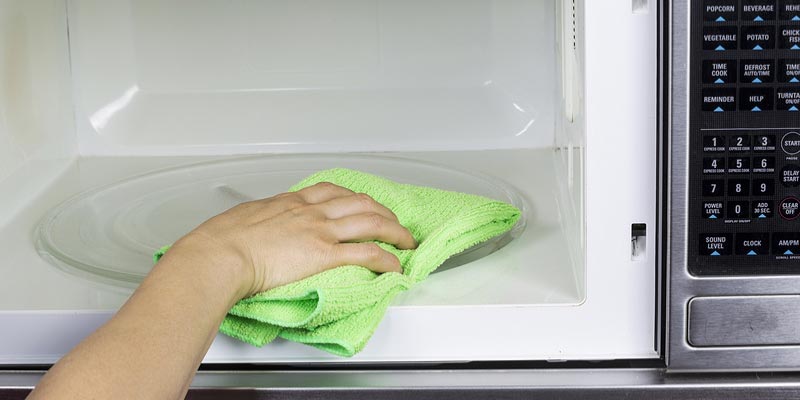Did you know the dirtiest thing in your kitchen is the sponge you use to clean it? That’s only the beginning of the dirtiest spots lurking in your kitchen, no matter how clean you think it is.
Top 7 Dirtiest Spots In Your Kitchen
1. Sponges & Dishcloths
That sponge you use to wash your pans and dishes is laden with E. coli and other icky microbes. A study conducted by the National Sanitation Foundation (NSF) International found 75% of dish sponges and rags contained some form of coliform bacteria, which includes E. coli and Salmonella.
The Solution? Put your sponges in the microwave for 20 seconds to help kill most bacteria. Regularly wash your dishcloths between uses.
2. The Kitchen Sink
You wash your fruits and veggies here, as well as your hands, and yet the kitchen sink is loaded with bacteria. Despite the fact endless streams of soap and water wash over your sink in a given day, it’s still in need of regular scrubbing… or else. The NSF found 45% of household kitchen sinks are contaminated with coliform bacteria.
The Solution? Regularly wash your sink using a disinfectant. You can also apply a layer of baking soda over all surfaces, let it sit then scrub and wash away. Even if you do all of these things on a regular basis, we still don’t recommend eating anything that touches the surface of your sink.
3. Your Refrigerator, Especially The Meat & Veggie Drawers
The place where your food lives is likely teaming with bacteria. Regularly disinfect your fridge to prevent it from becoming an icebox full of bacteria. Most germs live in the vegetable and meat compartments. These refrigerator compartments are dark and moist, the perfect environment for germs to breed. That means your safe haven for vegies could be filled with salmonella, listeria, yeast and mold. While meat compartments are often home to Salmonella, E. coli, yeast and mold.
The Solution? Keep your produce somewhere separate from your meats. Further prevent cross-contamination by keeping washed and unwashed produce in different compartments. Once a week or once every other week, remove drawers from the fridge and thoroughly disinfect and clean. Wash bins using a clean sponge (freshly microwaved) and mild detergent. Use a clean rag or paper towel to wipe dry. Make sure drawers are completely dry before putting them back in the fridge.
4. Your Cutting Board
Your loyal cutting board is dirty enough to negate all of the scrubbing you just did on those veggies you’re now cutting on it. An NSF study revealed 18% of kitchen cutting boards were contaminated with coliform bacteria.
The Solution? Use different cutting boards for meats and veggies. Wash your cutting board after each use with hot soapy water. Instead of letting it air dry, use a paper towel to thoroughly dry the board and prevent moist surfaces from promoting the development of bacteria.
5. Cabinet Hardware, Stove Knobs & Other Kitchen Handles
There’s no part of your stove or cabinets that you touch more frequently than the hardware, and as a result these handles get pretty icky.
The Solution: When you disinfect your kitchen, don’t forget to focus on handles. Give handles a quick disinfecting every time you touch them with dirty hands.
6. Your Kitchen Countertops
Your countertops get a lot of wear and tear, and as a result they are coated in bacteria. According to the NSF, about 1/3 of all countertops are covered in coliform bacteria, that’s fecal contamination—yikes! Granite countertops are great because they hide a lot of filth, but as a result they are not always cleaned as often as they should be.
The Solution: Disinfect your countertops regularly, especially after preparing raw foods on or near surfaces. Try to keep pet dishes, pet toys and other dirty items off of your countertops.
7. Your Microwave
Your microwave is capable of killing germs when you turn it on but it’s also a great environment for bacteria to breed. Bacteria can survive a surprisingly long time on surfaces, especially if you don’t regularly disinfect your microwave.
The Solution? Use a disinfectant to wipe down the insides and outsides of your microwave at least once a week. As soon as something spills or explodes in the microwave, be sure to clean it up right away to prevent microbes from reproducing. Cover foods that are prone to splattering before microwaving.

